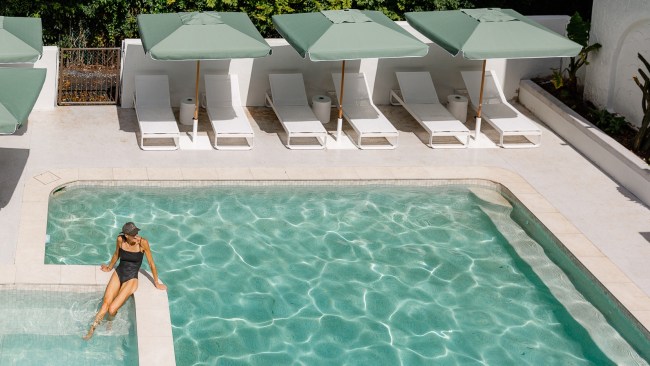I went to see Trail of Lights in Mildura, the whole city surprised me
Art meets nature in this Murray oasis where a new light installation amps up the magic.
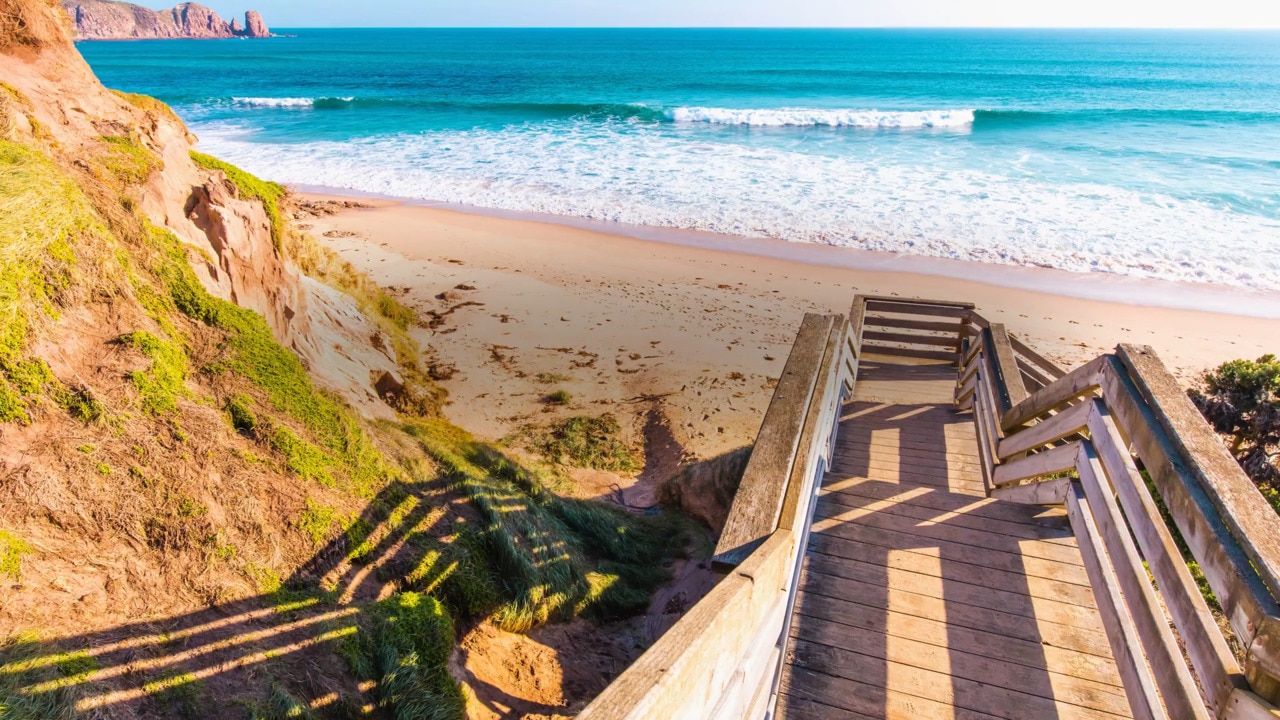
Lifestyle
Don't miss out on the headlines from Lifestyle. Followed categories will be added to My News.
A flutter of anticipation sweeps over me as a riot of kookaburras heralds the last light of the day, sounding their warbled cackle as the sun slips below the horizon.
In darkness, we file across a footbridge to the island, where each footstep lands with a soft thud onto the ribbon of compacted dirt that makes up the trail. The scent of arid earth lingers in the warm night air as, suddenly, the ground begins to glow. Thousands of “fireflies” light up, flaring and flaming across a forest of towering gum trees bordered by the mighty Murray River. “Magic happens when art and nature meet,” says Bruce Munro.
The unassuming 65-year-old Briton is the internationally renowned artist behind Field of Light at Uluru. His captivating new installation, Trail of Lights, opened in March on Latji Latji Country, in Mildura in northwest Victoria. Its scale is staggering: the meandering stream of light with 12,550 illuminated “fireflies” and 22 “fishing rods” sprawls across 15ha on Lock Island. As I navigate one of the island’s five trails, which span 950m to 2.2km, the magic Munro speaks of is palpable. The fireflies feel both of the earth and otherworldly, and the installation’s exquisite fragility reminds me of our own.
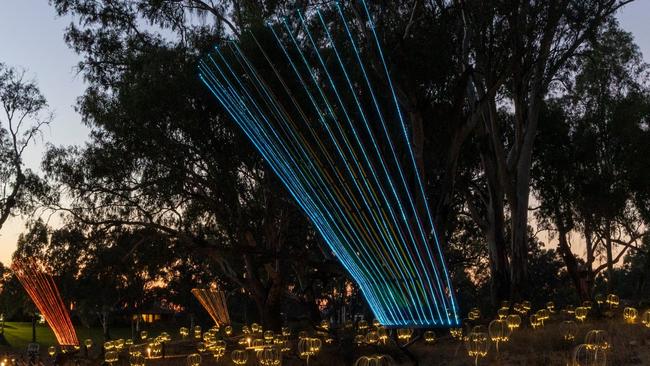
It’s a moving experience and not what I expected from one of Australia’s primary citrus-growing regions. An oasis in the desert and renowned food bowl on the banks of the Murray, where houseboats and paddle steamers pootle – and a 90-minute drive from Mungo National Park, a starkly beautiful landscape and the site of the world’s oldest known human cremation – there’s also a strong artistic undercurrent that flows through Mildura. From the Langtree Connection at the Riverfront Precinct – a space that acknowledges the area’s myriad traditional owner groups and where symbols depicting the sandhill people are embedded into the walkway – to Mildura City Heart’s Mural Art Project, with its giant renderings of oranges and regent parrots splashed onto the side of buildings, art abounds.
“Mildura is very difficult to see in a day or two,” Munro says. “The promenade by the river, the Mildura Arts Centre, we’re talking about a small regional city.” Often referred to as one of Victoria’s best-kept secrets, the permanent collection at Mildura Arts Centre includes the largest single archive of paintings by Anglo-Irish portrait artist William Orpen, along with a pastel by French Impressionist Edgar Degas. The gallery opened in 1956, founded on a bequest (one of Australia’s most generous) from Victorian Senator RD Elliott and his wife Hilda. Its remarkable collection also includes works by significant Australian artists, such as landscape painter Arthur Streeton and Impressionist Frederick McCubbin.
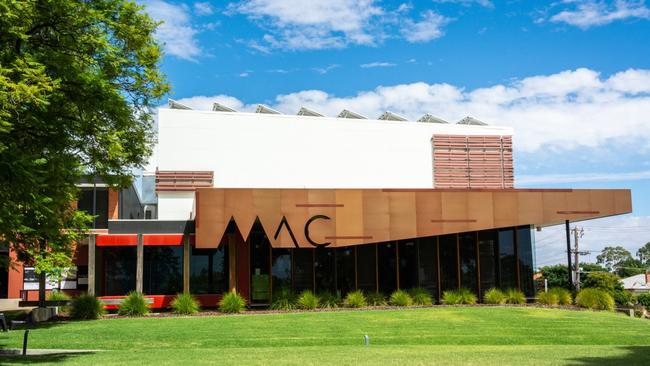
Almost 70 years on, the gallery has flourished and now comprises five exhibition spaces, a 500-seat theatre, a café bar and sculpture park featuring pieces by prominent sculptors Ron Robertson-Swann and John Robinson. It’s an extraordinary feat for a regional gallery, which began its life inside the historic Rio Vista house which had been the family home of WB Chaffey, a Canadian engineer who, along with his brother George, established the first irrigation scheme in Australia in Mildura in the late 1800s. Today, it’s an extraordinary time capsule with original embossed Lincrusta wallpaper from England, marble fireplaces and Italian tile floors.
Light filters through stained-glass windows as we walk into the entrance hall, led by Mildura Arts Centre director Antoinette Zema, who points out its more fascinating features. “When two of the stained-glass windows were vandalised, they were replaced with replicas that include modern imagery,” says Zema.
We lean in, eager to spot the oranges bearing “Mildura” produce stickers and the tractor added to a country scene. In the basement ballroom we tread the bowed Murray pine boards of the sprung dancefloor, which was once the scene of Prohibition-style parties. “There’s talk about tunnels leading from the house to the river but we’ve never found them,” says Zema.
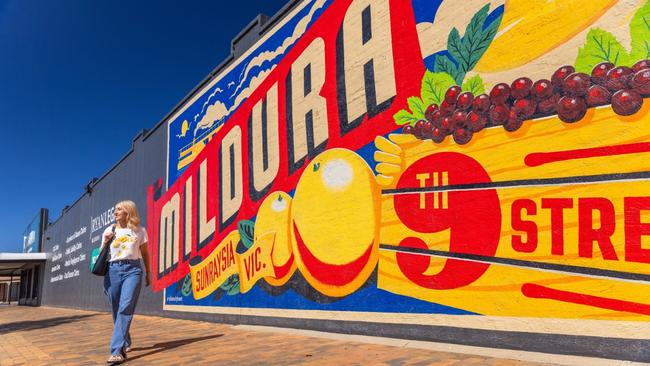
Over time, Mildura’s raucous balls of yesteryear gave way to a modern dining scene befitting of a food bowl. Chef Stefano de Pieri still plates up his beloved rustic Italian dining made with local produce, as he has done for 34 years, at his eponymous restaurant in the cellars of the Grand Hotel on Langtree Ave. Today, the area is better known as Feast Street, where you can sample everything from smoky Middle Eastern charcoal chicken at Baghdad Kitchen to hearty biryani and spicy vindaloo at Indian Taste Makers.
But it’s the café scene that has me – and the locals – excited. When I ask for recommendations, people reel off an exhaustive list that inevitably includes Brass Monkey on Eighth Street, Blk.Mlk on Deakin Ave and Nash Lane on Tenth Street. I opt for the latter because it’s a five-minute stroll from my room at Kar-Rama Hotel, a motel built in the 1960s that reopened as a hotel in February following a significant revamp. It has a contemporary take on Mid-Century Modern interiors, an additional building to house reception, a bar and a common area, plus a butterfly pool. Now, the hotel evokes photographer Slim Aarons’ 1970 photograph Poolside Gossip.
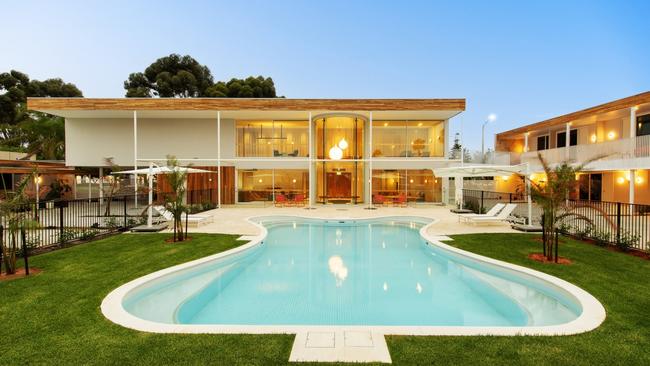
But if there’s gossip to be had, it’s being spilled over excellent coffee at Nash Lane café, which opened in a converted warehouse in 2016. A young crowd spills out onto Tenth Street on a weekday morning; it’s 9am and the day is already blazing towards 33C, so I nab a table outside under the vines to escape the sun. As I toss up between chilli egg tacos and a house-made granola, the warm, brown-eyed gaze of a woman catches my eye. She’s an enchanting mural by an elusive international street artist and she comes with a question: “What dreams move your soul?”
Mildura, it seems, wants to help us find out.
Three more dazzling light shows
Lightscape, Perth and Melbourne
WA aficionados of light art will recognise Submergence, a walk-through installation by Squidsoup which has been exhibited on six continents. It’s one of 20 works at the third iteration of Lightscape, a two-kilometre trail through Perth’s Kings Park from June 13 to July 27. This year’s theme is Pollinators, so expect luminescent flora and fauna. The festival’s signature installation, Winter Cathedral by Mandlights, also makes its return. Lightscape is also at Melbourne Royal Botanic Gardens from June 20 to August 10.
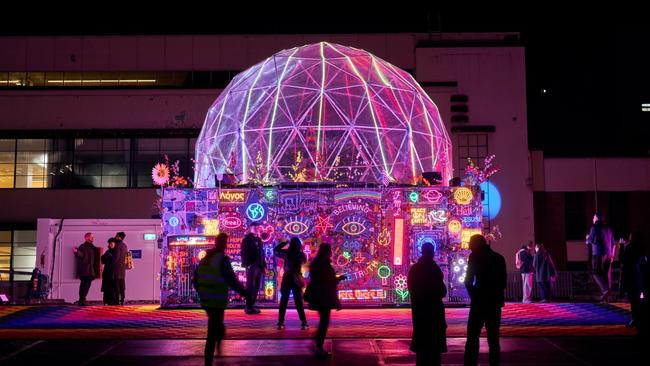
Bicheno Beams, Bicheno, Tas
Whale and penguin-watching, bushwalking and some of Tassie’s best seafood. There are plenty of reasons to visit the beachside town of Bicheno, a 2.5-hour drive from Hobart. And come winter, there’s also Bicheno Beams from June 28 to July 19, a free, family-friendly nightly laser and sound show in Bicheno Lions Park. Two different shows play on alternating nights, and the event is alcohol-free.
Illumina, K’gari, Qld
The world’s largest sand island, K’gari (Fraser Island) is 15km off the coast of Hervey Bay, Queensland, and people come from all over the world to see its complex dune systems. In 2024, Kingfisher Bay Resort launched its new permanent light show Illumina with Return to Sky, a story exploring the island’s unique landscapes and regeneration, created by artist Bruce Ramus in collaboration with traditional custodians, the Butchulla people.
Getting there
Mildura is about a six-hour drive from Melbourne and four and a half hours from Adelaide. Flights are available from Melbourne and Sydney with Qantas and Rex (Melbourne only).
Staying there
Kar-rama has rooms from $256 a night.
Lightshow Trail of Lights is open on Fridays, Saturdays and Sundays from 6pm. Adult tickets cost $45 and children $25.
Originally published as I went to see Trail of Lights in Mildura, the whole city surprised me



